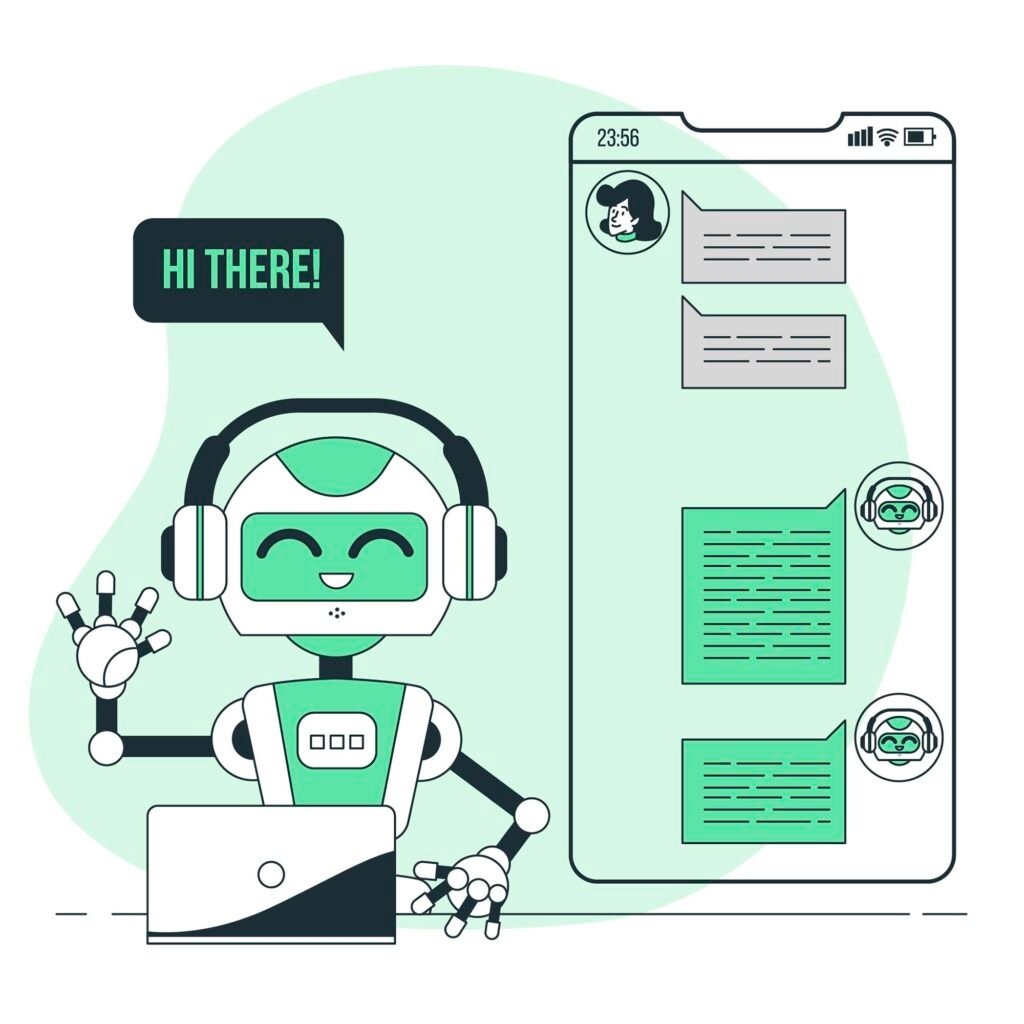Top Marketing Technology Trends to Watch Out For in 2024
24 Oct 2023
Igor Kelly

Multiple observers agree that marketing fundamentally changes due to technologies and new digital communication channels. New solutions are coming to market every day, and companies are spending more money on marketing technologies, even with the associated risks and budget cuts.
Companies that are looking for more productivity can no longer avoid marketing automation. New areas of responsibility are constantly emerging that need to be covered by technologies. Automation is being used to create seamless and personalized customer journeys across various touchpoints, Martech tools are increasingly using artificial intelligence to deliver highly personalized content and experiences to customers. Moreover, with increased data regulations like GDPR, Martech focuses on data privacy and compliance solutions.
This article overviews emerging Martech trends mentioned above for 2024 and beyond and how new marketing technology opens up extraordinary business possibilities.
The Power of Automation in Marketing
Cutting-edge Martech solutions are revolutionizing how businesses connect with customers, offering advanced tools for data-driven marketing campaigns and personalized customer experiences. Martech can automate various operations to streamline marketing efforts:
- SEO: Martech automates keyword research, on-page optimization, and tracking of search engine rankings to improve a website’s visibility in search results.
- SMM: It can schedule and publish posts, analyze engagement, and manage social media accounts across platforms like Facebook, Twitter, LinkedIn, and Instagram.
- Email marketing: Martech automates email campaigns, including list management, segmentation, personalization, and tracking email performance.
- Content marketing: It helps plan, create, and distribute content, automating content calendars, distribution to various platforms, and analytics.
- Analytics and reporting: Marketing automation tools generate reports on website traffic, social media engagement, email campaign performance, and more, simplifying data analysis.
- Lead generation: It automates lead capture, nurturing, and scoring, enabling businesses to identify and prioritize potential customers.
- CRM: Martech integrates with CRM systems to manage customer data, track interactions, and automate sales and marketing processes.
- Personalization: It uses data-driven insights to automate personalized content recommendations and product suggestions for website visitors and email recipients.
- E-commerce integration: AI-powered marketing tools automate e-commerce processes like cart abandonment emails, product recommendations, and inventory management.
Marketing technology trends provide companies with a more robust toolkit and a comprehensive control center to manage all business processes. With appropriately selected, well-implemented tools, companies can orchestrate the customer journey of their potential customers in real time and across platforms.
Take a look at three use cases of automated marketing campaigns in big companies, along with the challenges they faced and the solutions provided through the latest Martech trends implementation:
1. E-commerce personalization
Challenge: An e-commerce giant struggled with delivering personalized product recommendations to millions of customers effectively. Manual efforts were labor-intensive and couldn’t scale.
Solution: The company implemented marketing automation powered by machine learning algorithms. The system automatically analyzed customer behavior, purchase history, and preferences to generate personalized product recommendations. Automated emails were sent to customers based on browsing and buying patterns, significantly increasing click-through rates and sales.
2. Customer onboarding for a subscription service
Challenge: A subscription-based streaming platform had high churn rates during the initial onboarding period. They needed a way to engage new subscribers immediately and reduce early cancellations.
Solution: The company implemented a marketing automation tool to create a series of onboarding emails and messages triggered by user actions. When subscribers signed up, they received a personalized welcome email with tailored content recommendations. A platform sent automated reminders, tutorials, and exclusive content offers at strategic intervals. Personalized customer interactions reduced churn rates during the critical early stages and improved long-term subscriber retention.
3. B2B lead nurturing
Challenge: A large B2B technology company had a vast database of leads but struggled to convert them into customers. The challenge was to nurture leads through the complex B2B buying journey efficiently.
Solution: The company adopted a marketing automation system to track lead engagement and behavior across various touchpoints. Based on lead scoring and behavior triggers (e.g., downloading whitepapers or attending webinars), the system automated the delivery of targeted content and personalized email sequences. A new marketing technology allowed the company to nurture leads with relevant information at the right time, ultimately increasing the conversion rate of leads into paying customers.
Martech solutions address specific challenges in each case by automating repetitive tasks, enabling personalized communication, and delivering timely and relevant content to customers or prospects. Custom Martech software development solutions offer businesses greater flexibility and a richer set of features than off-the-shelf alternatives and have been proven to enhance customer engagement, minimize churn, and boost conversion rates for SMEs and large enterprises.
The Rise of AI Integration
2.6 to 4.4 trillion US dollars — this is the sum a McKinsey study estimates the possible global increase in production of generative artificial intelligence alone. AI, which has been revolutionizing marketing tech for the last decade, could become a “production booster,” stimulate the global economy, and accelerate changes in the world of work.
What exactly is the change in processes through AI? Before using these technologies, marketing managers already had access to large amounts of data. But only with the help of artificial intelligence is it possible to structure this information logically, analyze it in a targeted manner, and process it profitably.

Still being one of the hottest trends in Martech, AI offers innovative strategies to significantly enhance campaign effectiveness and customer engagement. Let’s look at examples of how AI adoption can strategically strengthen marketing campaigns.
- Personalization and customer segmentation. AI algorithms analyze vast amounts of data to create detailed customer profiles and identify patterns. Similarities/differences found enable marketers to tailor their marketing efforts, resulting in higher customer satisfaction, increased conversions, and improved customer retention rates.
- Predictive analytics and lead scoring. How do you identify and prioritize potential customers (leads) who are most likely to convert into paying customers? New marketing technology based on predictive analytics assesses historical data and behavior patterns to assign a lead score to each prospect. The analysis result helps marketers focus on the most promising leads, improving conversion rates, optimizing resource allocation, and increasing revenue.
- Chatbots and conversational marketing. AI-powered chatbots can handle a wide range of customer inquiries and interactions 24/7. They offer immediate responses, personalized recommendations, and seamless customer experiences. Automation of short conversations frees up human resources for more complex tasks.
These tech-driven marketing strategies can significantly enhance the efficiency and effectiveness of marketing campaigns, ultimately leading to improved customer engagement, higher ROI, and a competitive edge in the market.
Personalization at Scale
Personalization provides customers with relevant information based on their interests, needs, and usage behavior. Based on historical behavior, machine learning determines what preferences and preferences each customer has. This results in personalized content or product recommendations that interest the customer and precisely meet customer needs.
A data-driven marketing software allows for creating hyper-personalized campaigns by using various capabilities.
1. Behavioral tracking and analysis
Martech tools can track user behavior across various digital touchpoints, such as websites, apps, and emails. New marketing technology collects data on what products or content users interact with, how long they spend on specific pages, and their click-through rates.
The behavioral data serves as the foundation for hyper-personalized campaigns. By analyzing this data, Martech software can generate insights into individual preferences and tailor content and product recommendations accordingly.
2. Customer segmentation and targeting
Martech platforms offer advanced segmentation capabilities, allowing businesses to divide their audience into highly specific groups based on demographics, behavior, and preferences.
By segmenting the audience, marketers can create campaigns that target each group with messages and offers that are particularly relevant to them, resulting in higher engagement and conversion rates.
3. Dynamic content personalization
Many Martech tools support dynamic content personalization, which automatically customizes content blocks within emails, web pages, or ads based on individual user data.
With dynamic content, Martech software can deliver personalized product recommendations, tailored messages, and even localized information in real time. This level of personalization significantly enhances the customer experience and drives higher conversion rates.
Multi-Channel Marketing
Today, consumers are looking for something closer to a personal relationship. Marketers agree that companies should build a contextual and empathetic relationship with their customers that focuses on understanding what they want and how they want to be treated.
The only way to achieve this is through omnichannel marketing solutions that deliver integrated and real-time experiences based on a complete customer view.
That’s why it’s now a top priority for companies aiming to expand their online presence and follow the latest technology trends in marketing. In 2024, they should bring their marketing technology solutions onto a unified platform and leave the fragmented approach of recent years behind them.
Martech is facilitating seamless customer experiences across channels through various tools and technologies.
- Email marketing. Marketing automation platforms enable personalized email campaigns based on customer behavior and segmentation. They automate email sends, ensuring timely, relevant content delivery and allowing businesses to nurture leads and maintain engagement.
- Social media marketing. SMM and scheduling tools streamline content planning and scheduling across multiple social platforms. They help maintain a consistent brand presence, engage with customers in real time, and respond promptly to comments and messages, enhancing the overall social media experience.
- Chatbots and live chat support. AI-Powered Chatbots provide instant responses to customer queries, offering 24/7 support. They can understand natural language and deliver personalized recommendations or assistance, ensuring a quick and convenient customer service experience.
Innovations in marketing software enable businesses to maintain consistent, relevant, and timely customer interactions, contributing to a seamless and positive overall customer experience.
Best practices for an omnichannel marketing strategy
Simply following marketing technology trends is not enough, you must develop a plan to succeed. Here are some tips on effectively setting up an omnichannel marketing strategy for your company.
1. Set goals.
On the one hand, it’s about the goals you want to achieve with omnichannel. On the other hand, it’s about how you approach implementation. Omnichannel sometimes requires significant restructuring, which is why the change takes time. The goals set should be clearly measurable.
2. Evaluate target group and channels.
The target group is central to an omnichannel approach as it is a highly customer-centric approach. Find out which channels work better for target groups and your company.
3. Define customer journey.
Identify your customers’ journey to your product. Which channels do you currently use? Is the route perhaps too complicated?
4. Set up channels.
When setting up channels, addressing the target group appropriately is essential. Ensure your website is optimized for a seamless user experience across devices. Utilize platforms like Facebook, Instagram, Twitter, LinkedIn, and others relevant to your audience and tailor content to each of them.
5. Monitoring
Define specific, measurable, and relevant KPIs for each channel, such as website traffic, conversion rates, click-through rates, and customer acquisition costs. Use analytics tools like Google Analytics, social media insights, and marketing automation platforms to gather data from all your channels.
The success of implementing an omnichannel marketing strategy can be attributed to the meticulous approach taken in bespoke software development, ensuring every feature aligns with your specific requirements.
Privacy and Compliance
Many people want individualized online experiences, but it is increasingly important that their privacy and data protection on the Internet are given greater consideration. Therefore, privacy and compliance in marketing tech are paramount because they safeguard consumers’ personal information and uphold ethical standards. Building trust and brand credibility has never been that crucial among other marketing technology trends.
According to recent studies, 65% of Internet users already avoid users of certain online services due to privacy concerns. This percentage is expected to continue to rise, so privacy management will become an essential part of the digital relationship between companies and customers in the coming years.
To ensure data privacy in martech, monitor three key performance indicators (KPIs):
- Consent rates: measure the percentage of users who provide explicit consent for data collection and processing, ensuring compliance with regulations like GDPR.
- Data breach incidents: keep track of any data breaches or security incidents and their resolution time to prevent data leaks.
- Opt-out rates: monitor how many users opt out of data collection, ensuring transparency and the ability to respect user preferences, thereby mitigating potential compliance issues and reputational damage.
Top Emerging Technologies in Marketing

The majority of marketing budgets are spent on marketing technology. Gartner’s research shows that no less than 26.6% of the marketing budget is spent on this. That is more than other components such as media, marketing personnel, and the use of agencies.
Check out a few marketing technology trends to watch for in 2024 and beyond.
- Emotion-based targeting is still young as a new metric for targeting target groups, but it is already being used. For example, the “Feels” project from the “New York Times” offers 18 predefined user emotions. The basis is an AI trained on texts that can predict rough user emotions with high probability, thus generating around 40 percent more impressions. Amazon is also active in this field, where emotion assumptions are made based on voice analysis.
- As businesses continue to seek ways to enhance customer experiences and drive sales, IoT and Martech integration are becoming increasingly popular. Retailers deploy IoT sensors and beacons throughout their stores to collect data on customer movement, dwell times, and product interactions. This data is then integrated with Martech platforms, allowing marketers to analyze and gain insights into customer behavior within physical stores.
- Brand avatars are being used more and more often. They are indispensable for sales, service, and useful content — whether as chatbots like in the BBC project “Beep,” embedded in games, or as cosmetic consultants like Procter & Gamble’s SK-II.
- Augmented reality is not among technology trends in marketing, but it continues to move from the pilot phase into distribution. On Pinterest, users can use the “Try on” function to try out products virtually when they use the Pinterest Lens camera. All Nippon Airways allows you to understand the cabin interior, and with hiking boots from Merrell and a bit of hardware, you can discover the Dolomites.
- Collaborative marketing software and video conferences have seen extreme increases in usage since the COVID-19 crisis. Team efficiency tools offer an entirely new form of advertising for B2B with a high level of accuracy. In any case, a new global attention dimension opens up, enabling granular B2C target group targeting, for example, fitness athletes.
The above trends are just a guess of how far the industry can go. Businesses embracing digital marketing evolution are likelier to stay competitive and thrive in today’s fast-paced online landscape.
Conclusion
Soon, marketing planning will primarily be about making informed, data-supported decisions, understanding customers, and choosing the right technology.
CRM systems, content marketing platforms, e-mail marketing, social media, and project management tools will open multiple opportunities for Martech innovators. To get to know your customers even better and put fact-based customer needs at the center of corporate activity – that is what trends in Martech point to.
Build your martech stack – but remember, this is just the journey’s beginning. Stay informed regularly about technology trends in marketing. Constantly re-evaluate your software portfolio to operate efficiently and successfully. The key to a tailor-made strategy is an experienced partner, so don’t hesitate to get in touch with the Lightpoint expert whenever you need to.


